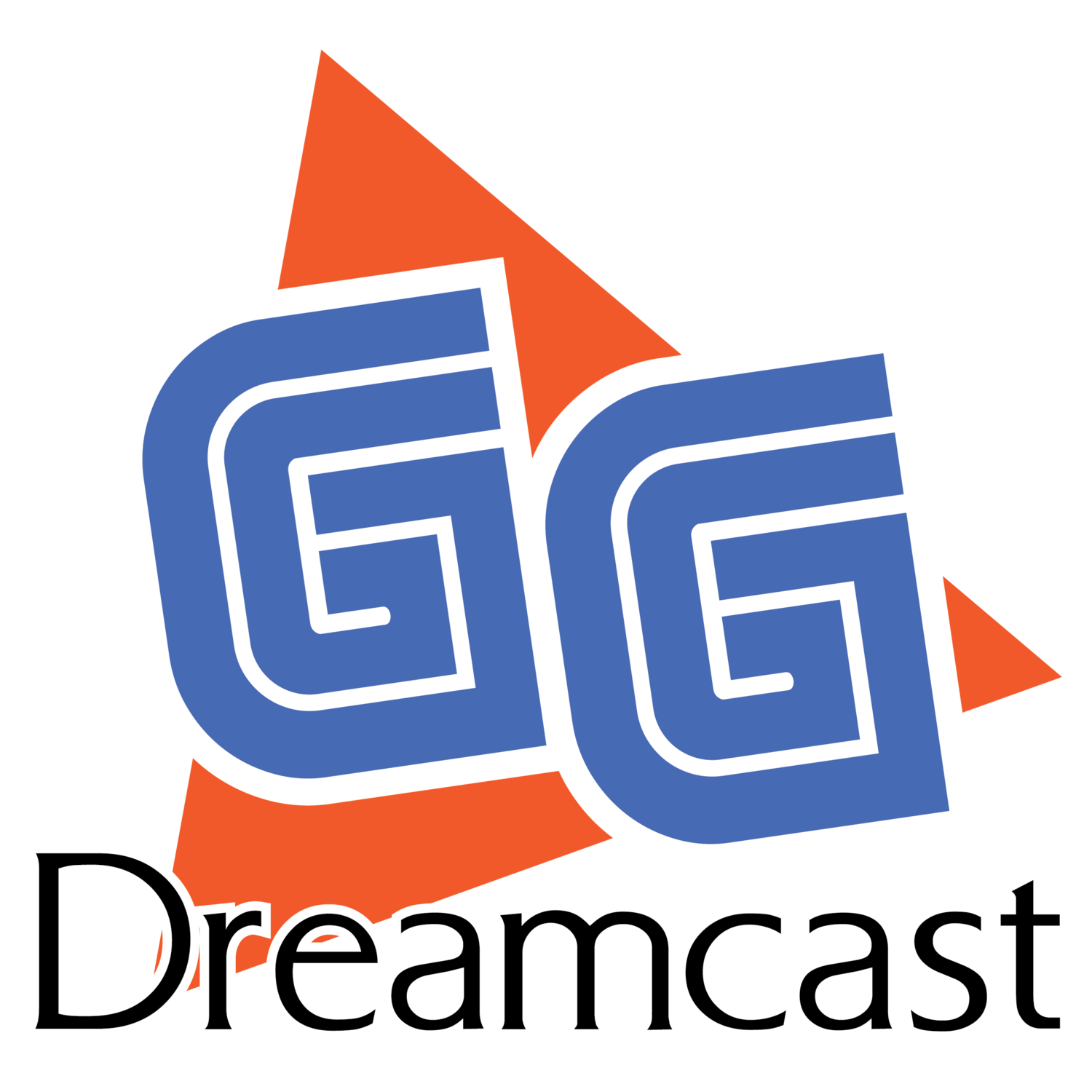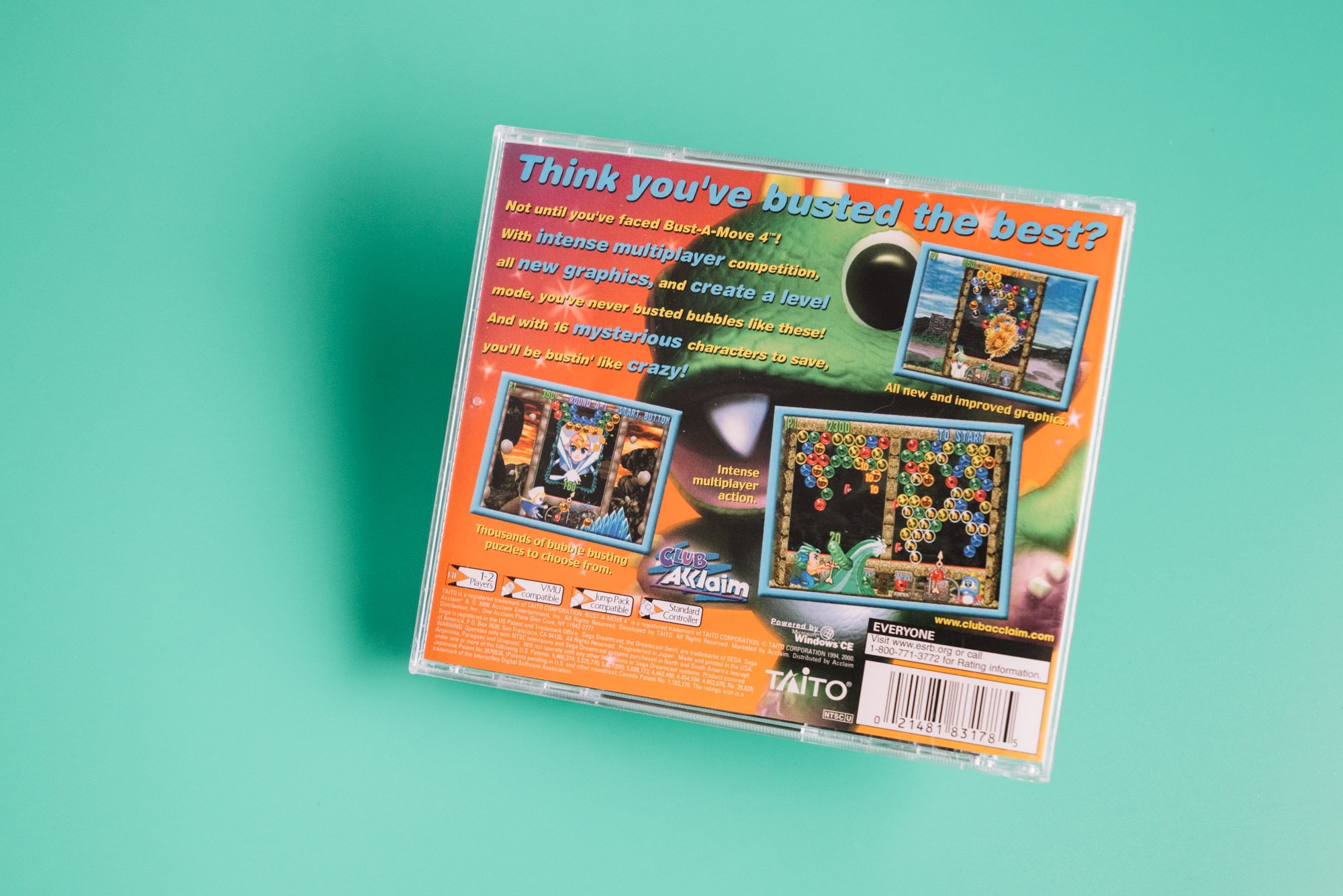Bust A Move 4
Alternate Titles - Puzzle Bobble (in Japan)
Developer - Taito
Publisher - Taito (Japan); Acclaim (USA)
Director - Kazuhiro Ohara (Arcade); Takahiko Kobayashi (Dreamcast)
Programmers - Nobutake Nakamura, Sayo Kihara, Takanori Emoto, Hiroshi Maruyama, Yuichi Onogi (Arcade); Koji Nakamura, Ryo Matsunuma, Yuji Anamizu (Dreamcast)
Designer - Seiichi Nakakuki
Composers - Rimiko Horiuchi
Genre - Puzzle (1 - 2 players)
Dreamcast Release Dates - March 16, 2000 (Japan); May 31, 2000 (North America); June 9, 2000 (Europe)
Additional Releases - Taito F3 System Arcade (1997); Playstation (1998); Game Boy Color (1999); Windows PC (2000)
Current Average Price - $40
Bust -a- Move 4 (known in Japan as Puzzle Bobble 4) is the only installment in the Puzzle Bobble series to appear on the Dreamcast. It was ported from the arcade release of 1997, and features arcade mode, two story modes, improved graphics, and new “pulley system” and “chain reaction” game mechanics. Stunningly, the game contains over 600 individual puzzle stages.
Gameplay and Modes
There are a number of different game modes in Bust -a- Move 4, but the core gameplay mechanics are the same throughout. The player controls a sort of launcher at the bottom of the puzzle board which shoots colored bubbles upward. The player attempts to launch bubbles at pre-arranged orbs on the board in order to link three or more same-colored bubbles together. This causes the bubbles to burst.
While the player launches bubbles, the bubbles on the board drop closer and closer to the bottom at set intervals. If the bubbles reach the bottom of the board, the player loses and can either quit or continue. If the player pops all of the bubbles on the board, the player wins and progresses to the next level until clearing all of the puzzles in the selected game mode.
In addition to these simple puzzle mechanics, there are two new mechanics added.
The “pulley system” presents the player with two groups of bubbles attached to either side of a rope stretched across two stationary puleys. Popping bubbles on one side of the rope will cause that side to be "lighter" and therefore rise higher, and when this happens, the other side lowers in response. This requires strategy to prevent one side of the rope from lowering so far that the lowest bubble touches the bottom of the board. In addition, the pulley and rope will eventually start shaking if one side is overloaded, causing the whole thing to drop down.
“Chain reactions” occur in the two-player or player-versus-CPU modes. When a bubble is dropped, it can move to another place on the board, which can cause more bubbles to pop. If this then causes even more bubbles to drop then the chain reaction continues.
There are many modes in Bust -a- Move 4, including the following -
Puzzle Mode - a field of stages labelled A-Z arranged in a stacked pyramid. To proceed through the alphabet, the player must beat a stage and then choose one of two branching paths until the player reaches the end of the alphabet. This means there are many possible routes to completing the puzzle mode.
Story Puzzle - a landscape with multiple tarot cards on it. The aim is to complete each of the tarot card stages. New tarot cards are revealed when each of the stages currently shown is completed.
Story Versus - the player's chosen character regains the seven light bubbles. They must face each of the main characters and defeat them to move on. Eventually, they reach Madame Luna and upon her defeat she is be revealed to be Dreg, the main antagonist in the series.
Win Contest - a tournament where the player must defeat as many opponents as possible. Once defeated, the characters encountered can be used in other modes.
Player Vs Player - multiplayer mode.
Challenge Mode - ranking mode.
Edit Mode - a puzzle creation mode. Up to 25 puzzles can be made and played. Once all the maps created have been completed, an ending is displayed.



